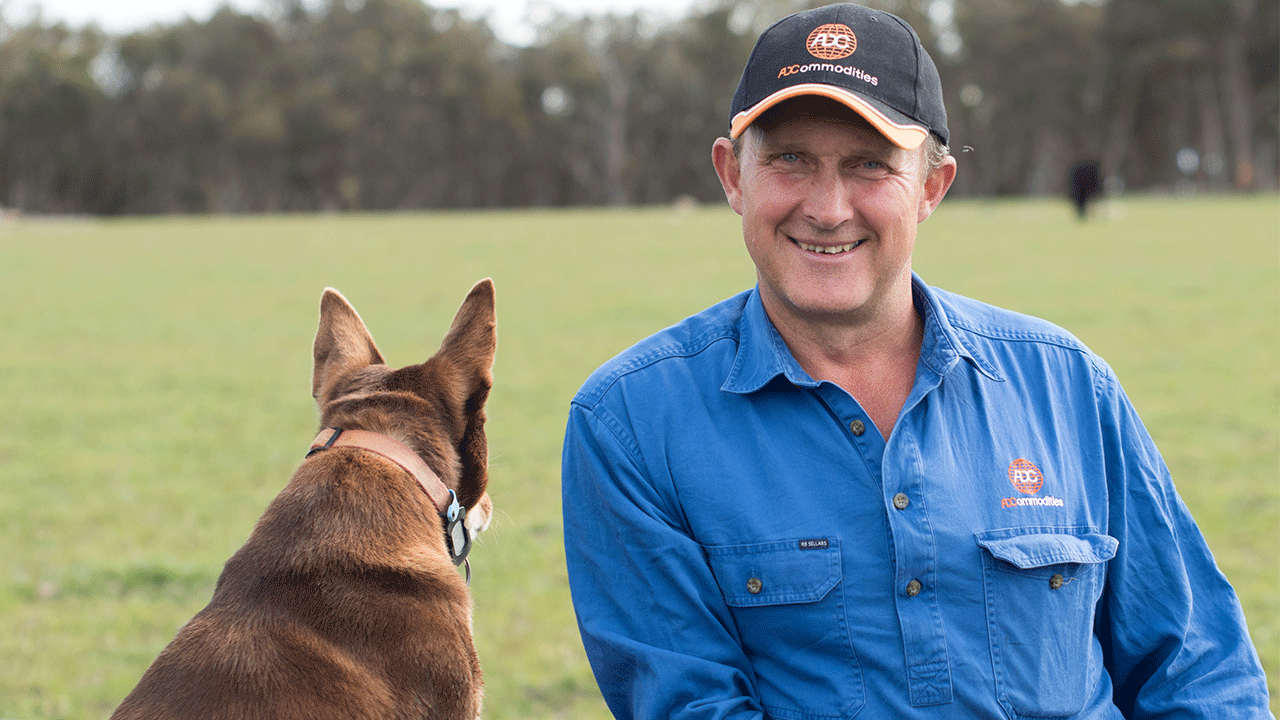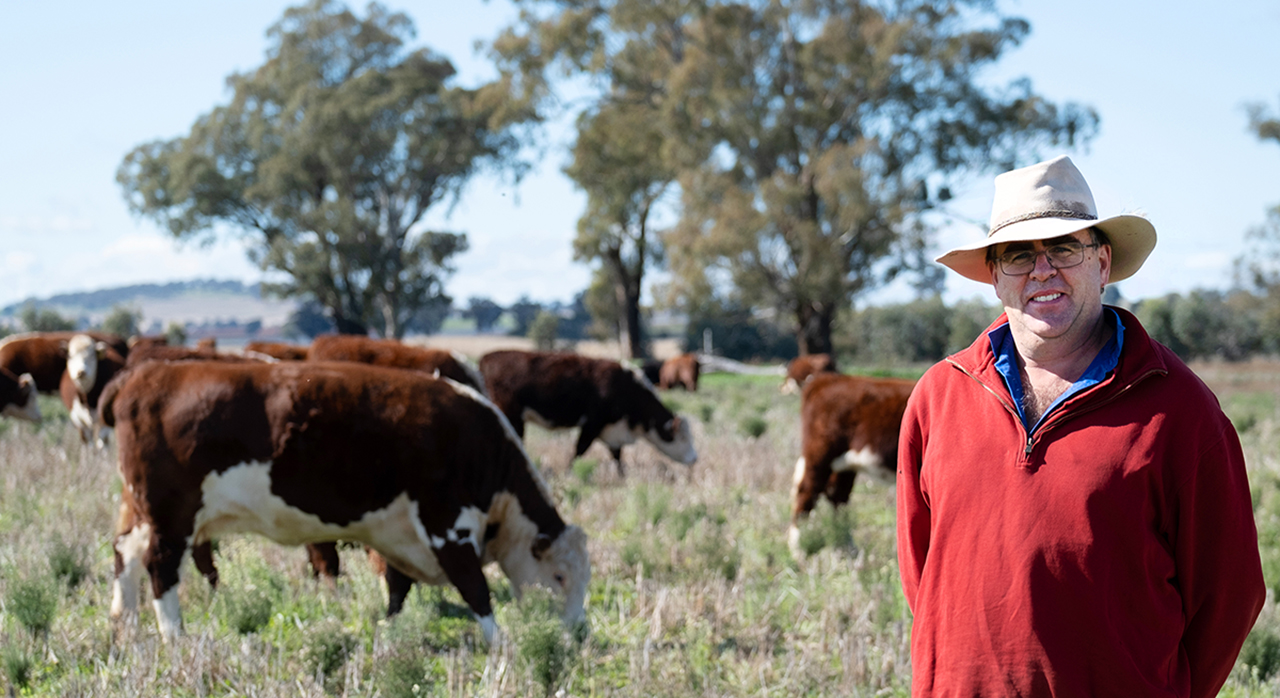EPISODE 1: What are Estimated Breeding Values?
Estimated breeding values – or EBVs – allow you to predict the genetics each animal will pass on to their progeny. This short animation clearly explains the ins and outs of EBVs.

There’s no doubt. When you’re buying a bull, his physical and structural soundness must be factored in. But what you can’t see is just as important. Using breeding values allows you to see ‘under the hood’ of an animal. You can see his weak points and his strengths to help decide if he’s the right fit for your herd.
Take two Hereford bulls. Same live weight. Both structurally sound. Both passed BULLCHECK® and morphology. Which one would you choose? Find out by watching this short video and see the difference breeding values can make.
Meet temperate cattle producers Andrew Carruthers and Chris Main.
Andrew runs a commercial temperate cattle and prime lamb operation in NSW. He shares his journey with breeding values and how they’ve accelerated the performance of his herd.
“The performance of our kg/ha has been outstanding. It's a combination of genetics and also understanding our country and the way we manage our livestock." Andrew Carruthers

The NSW beef producer switched to breeding with the goal to produce cattle which perform for his environment and management system.
“I buy heifer bulls with good EBVs for low birth weights and ease of calving. Since I’ve been using these bulls, I haven't had to pull a calf once.” Chris Main

Accelerating your herd’s performance with better breeding values starts with setting your breeding objective, understanding estimated breeding values and selection indexes and knowing your way around the BREEDPLAN website.
You can then start to apply your new-found knowledge when you’re ready to shop for your next high performing bull.
Here are some short ‘how-to’ animated videos to help get you started with using breeding values. It’s best to watch them in the order shown. Take your time. Watch and re-watch the videos at your leisure.


Estimated breeding values – or EBVs – allow you to predict the genetics each animal will pass on to their progeny. This short animation clearly explains the ins and outs of EBVs.
Before you start using breeding values, you need to know what you’re trying to achieve with your herd. Here are some important things to consider when setting your breeding objective.
A beef index takes a range of important production traits and combines them into one number so you can rank bulls, quickly and easily. Find out how they work and the different indexes you can pick and choose from.



Fertility is one of the most important profit drivers in a self-replacing beef breeding herd, so it’s important to select bulls that have favourable genetics for fertility, and that will positively influence their daughters’ reproductive performance. This short video explains the two fertility traits available.
Birth and Calving Ease traits are important traits in beef production systems as they assist in preventing dystocia and calving problems in the breeding herd. This short video explains the 4 traits available.
Weight traits are used in beef production systems to either improve growth or control mature cow size. This short video explains the five weight traits available.
Carcase and eating quality traits are important for most production systems, as more profit can be made from higher yielding and higher quality carcases. This short video explains the seven carcase traits available.

BREEDPLAN is where you’ll find breed-specific databases that store and update EBVs for thousands of animals. Here’s how you find and rank cattle based on their EBVs or beef indexes.
BREEDPLAN contains sales catalogues of upcoming bull sales. Here’s how you can search these catalogues and find bulls of your desired breed that meet your breeding objective.
This video steps you through how to go about buying a high performing bull, providing tips on what to do before, during and after the sale.
Catriona Millen, ABRI Extension Services
Boyd Gudex, ABRI Extension Services